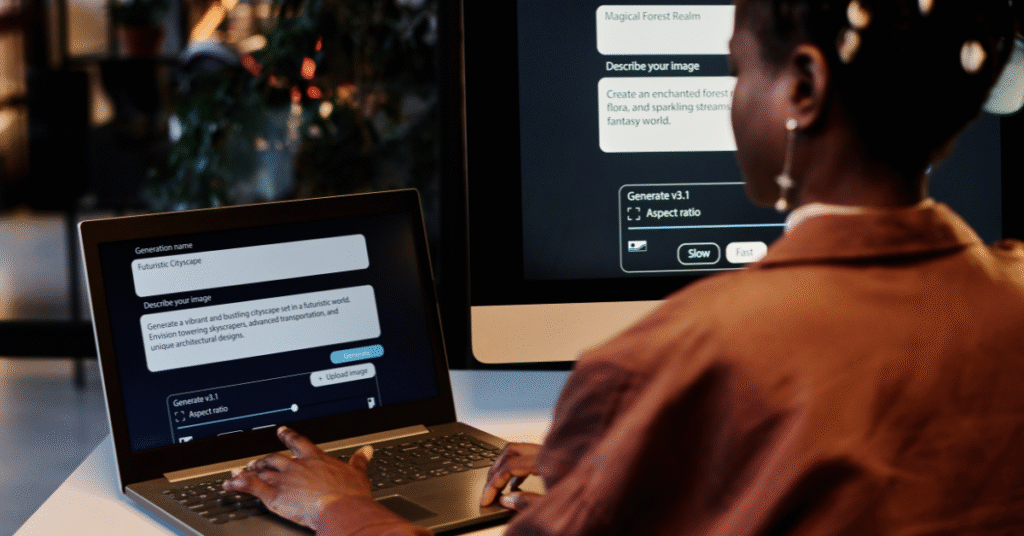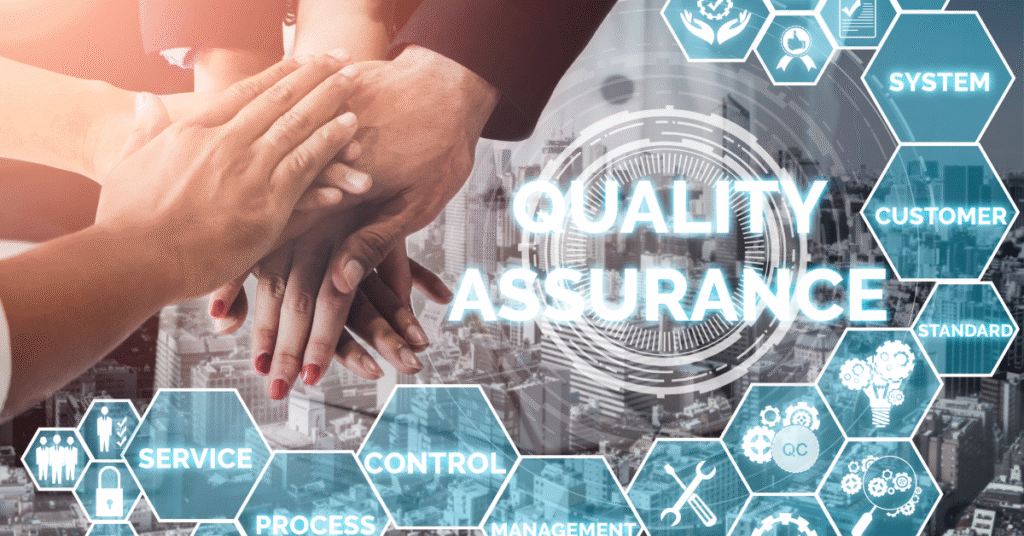Key Points:
- Introduction
- The Evolution of AI in Translation
- How AI Enhances Translation Quality
- The Role of Post Editing in AI-Driven Translation
- Reducing Translation Costs with AI
- The Balance Between AI and Human Expertise
- AI in Translation Quality Assurance
Table of Contents
Introduction
In today’s globalized world, translation is more than just a linguistic task — it’s a bridge between cultures, industries, and audiences. As businesses expand internationally, the demand for fast, accurate, and affordable translation has never been greater. Traditionally, human translators have been the backbone of this industry, ensuring linguistic accuracy, cultural sensitivity, and emotional resonance. However, the rise of Artificial Intelligence (AI) has brought a major transformation, reviewed, and optimized. AI-driven tools, powered by machine learning and neural networks, have significantly improved quality over the past decade. These systems not only speed up the process but also reduce the costs associated with post editing, which is the step where human linguists refine machine-generated translations for accuracy and natural flow. But how exactly does AI make translations better and more cost-effective? And where do human translators fit into this new workflow? In this article, we’ll explore how AI enhances quality, minimizes post-editing effort, and shapes the future of the translation industry — while highlighting the continuing importance of human expertise.
The Evolution of AI in Translation
Translation has evolved from being purely manual to increasingly automated. The early stages of machine translation were limited to basic word substitutions and often resulted in confusing or inaccurate output. AI systems can now analyze sentences as complete units, understanding context, tone, and even idiomatic expressions to a certain extent.
- From Rule-Based Systems to Neural Networks
Early systems followed strict grammatical rules and word-by-word replacements. The results were stiff and unnatural. Statistical models improved this by using data patterns, but they still lacked true understanding. Today’s AI tools leverage deep learning, which allows systems like Google Translate or DeepL to produce context-aware translations that sound much more human-like.
- The Shift Toward Human-AI Collaboration
Rather than replacing human translators, AI has become an intelligent assistant. Translators now spend less time on repetitive or predictable phrases and focus more on the creative, context-driven parts— especially in industries like marketing, law, and healthcare, where tone and precision are crucial.
How AI Enhances Translation Quality
AI’s contribution to translation quality is both measurable and multifaceted. It reduces linguistic errors, improves consistency, and adapts to brand-specific terminology.
1. Contextual Understanding
Modern AI translation systems analyze entire paragraphs, not just individual words. This means they can detect the subject, tone, and purpose of a sentence, resulting in more accurate phrasing. For example, the word “bank” could mean a financial institution or a riverbank — AI tools now use surrounding context to choose the right meaning automatically.
2. Improved Consistency
Human translators, despite their expertise, can introduce slight variations when translating repetitive phrases. AI ensures consistent terminology throughout long documents or large projects by using Translation Memory (TM) and Glossaries. This is especially beneficial for technical, legal, or medical content, where precision and consistency are critical.
3. Learning from Corrections
AI translation tools learn from human feedback. When translators make corrections during post editing, the system records these patterns to improve future output. Over time, this “learning loop” reduces repetitive errors, making subsequent translations faster and more accurate.
4. Customization for Industries
AI models can be trained on specific industry data. A system trained on legal terminology, for instance, will produce far more accurate results for contracts than a general-purpose model. This domain adaptation dramatically enhances translation quality and reduces time spent on corrections.
5. Handling Large Volumes Efficiently
For organizations dealing with vast amounts of multilingual data — such as global corporations or e-commerce platforms — AI enables large-scale translations at unprecedented speed. High-quality initial drafts allow human linguists to focus only on refining details, saving both time and resources.
The Role of Post Editing in AI-Driven Translation

Even with advanced technology, post editing remains an essential step in achieving high-quality results. Post editing is the process where human translators review and refine machine-translated content to ensure it meets professional standards.
Types of Post Editing
There are generally two levels of post editing:
- Light Post Editing: Correcting major grammatical or meaning errors to make the text understandable and functional.
- Full Post Editing: Refining style, tone, and fluency to match human translation quality — often required for publications or client-facing materials.
Why Post Editing Matters
AI-generated translations, though impressive, can miss nuances like humor, tone, idioms, or culturally specific meanings. Post editing ensures that the final product reflects human emotion and intent, maintaining authenticity and brand voice.
How AI Minimizes Post Editing Effort
AI systems continuously improve based on post-editor feedback. When editors make corrections, those changes feed into the translation engine, allowing it to “learn” and adapt. Over time, this dramatically reduces post-editing time and costs, as the AI produces cleaner drafts requiring fewer changes.
Reducing Translation Costs with AI
One of the biggest advantages of AI-driven translation is cost efficiency. Companies save money through automation while still maintaining — or even improving quality.
1. Faster Turnaround Means Lower Costs
AI drastically reduces the time needed for the initial translation. Human translators can then focus solely on reviewing and fine-tuning, allowing more content to be handled in less time — without compromising quality.
2. Reduced Human Labor
Instead of translating every word manually, human linguists now work as editors, verifying and improving AI-generated drafts. This streamlined workflow lowers overall project costs while retaining high standards of accuracy.
3. Consistent Quality Prevents Rework
When AI ensures consistency across projects, it reduces the risk of costly revisions later. Fewer errors mean less time and money spent on quality control.
4. Scalable Solutions for Businesses
For companies expanding into multiple markets, AI-powered translation offers scalability. A single translation model can handle dozens of languages quickly, helping businesses reach global audiences at a fraction of traditional translation costs.
The Balance Between AI and Human Expertise
Despite the many benefits of AI, human translators remain irreplaceable. Language is deeply tied to culture, emotion, and context — elements that AI still struggles to grasp fully.
Where Humans Excel
- Cultural Adaptation: Understanding idioms, humor, and local customs.
- Tone and Emotion: Conveying mood and intent that resonates with the target audience.
- Creative Language: Marketing, literature, and diplomacy demand imagination — something AI cannot replicate.
The Ideal Approach: Human-AI Collaboration
The most effective translation workflows combine AI’s efficiency with human intuition. AI handles repetitive content and terminology-heavy texts, while humans refine tone, style, and cultural relevance. This partnership not only boosts quality but also maximizes cost-effectiveness.
AI in Translation Quality Assurance

AI doesn’t just help produce translations; it also assists in quality assurance (QA). Advanced AI tools can automatically detect errors such as:
- Terminology inconsistencies
- Grammar issues
- Missing translations
- Incorrect formatting
These automated checks save editors time and ensure that final deliverables meet professional standards. AI-powered QA tools complement human review, providing both accuracy and efficiency.
Q: Can AI completely replace human translators?
A: Not yet — and likely not entirely. AI can handle routine or technical translations, but human translators are essential for creativity, emotion, and cultural adaptation.
Q: What does “post editing” mean in translation?
A: Post editing is the process of reviewing and improving machine-translated text to ensure it’s accurate, natural, and contextually correct.
Q: How does AI improve translation quality?
A: AI uses neural networks to understand context, learn from human feedback, and apply consistent terminology — resulting in clearer, more accurate translations.
Q: Is AI translation more cost-effective than human-only translation?
A: Yes. By automating the initial translation process, AI reduces manual effort and speeds up turnaround time, significantly cutting overall costs.
Q: What industries benefit most from AI-assisted translation?
A: Industries such as e-commerce, technology, finance, healthcare, and manufacturing benefit the most due to their need for high-volume, consistent translations.
Conclusion
The integration of AI in translation has transformed how we approach global communication. It enhances quality, accelerates turnaround, and significantly reduces post editing costs. However, it’s the collaboration between human creativity and machine intelligence that truly delivers excellence. As technology advances, translators are becoming more empowered, not replaced. They now have the tools to focus on creativity, nuance, and authenticity — ensuring every translation connects with its audience at a human level.
Call to Action
At Translation Excellence, we combine cutting-edge AI technology with the expertise of professional linguists to deliver accurate, culturally adapted translations that truly resonate. Whether you’re translating marketing content, technical manuals, or legal documents, our hybrid approach ensures both speed and quality — without compromising meaning. Ready to elevate your global communication?
Contact Us today and experience the perfect balance of innovation, precision, and human touch.


